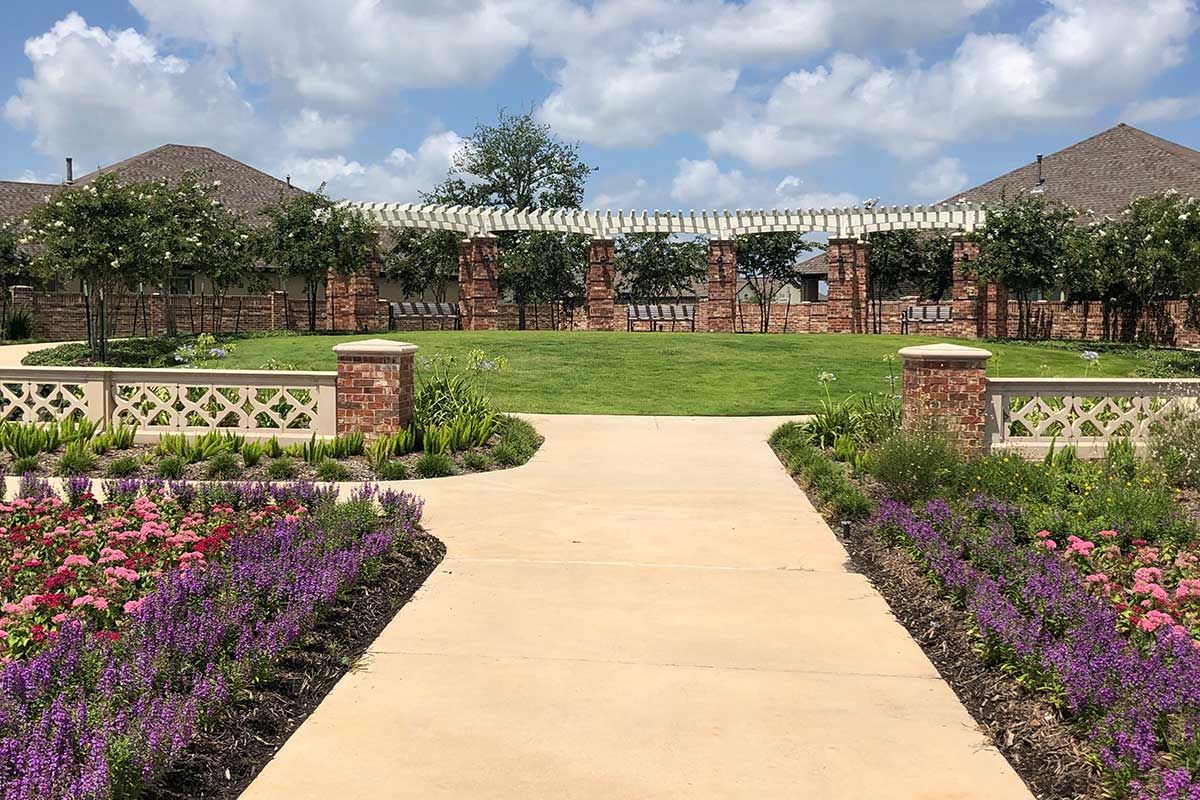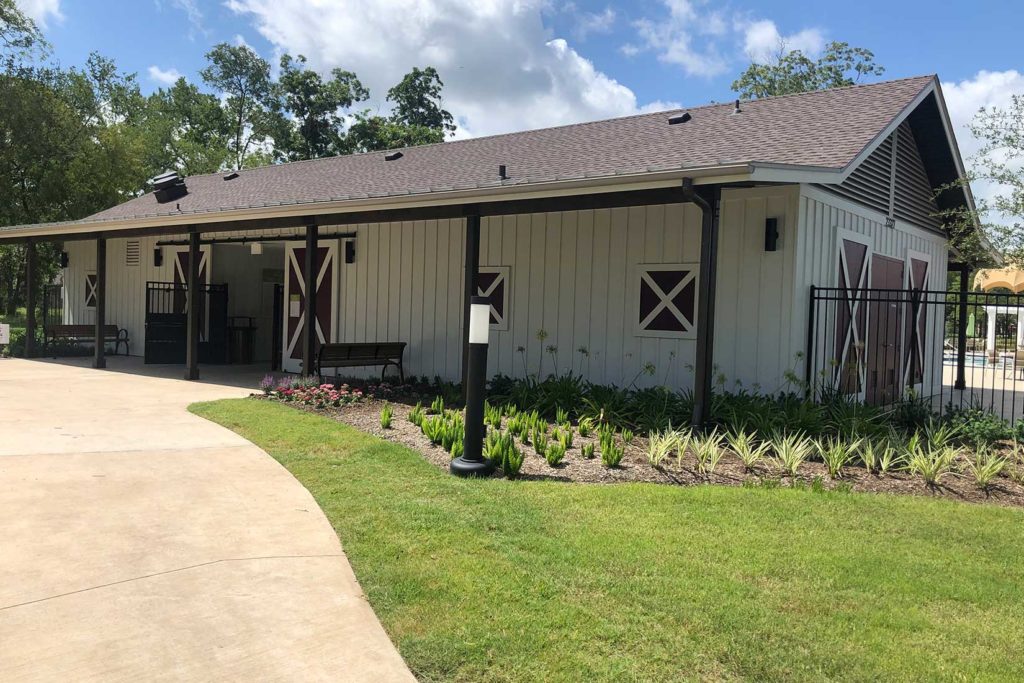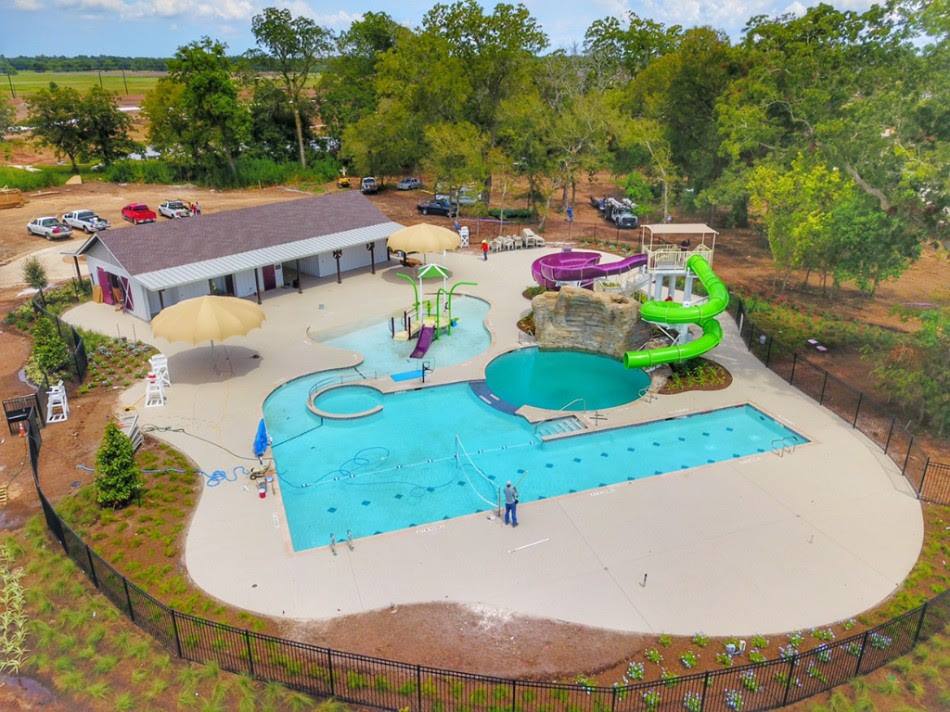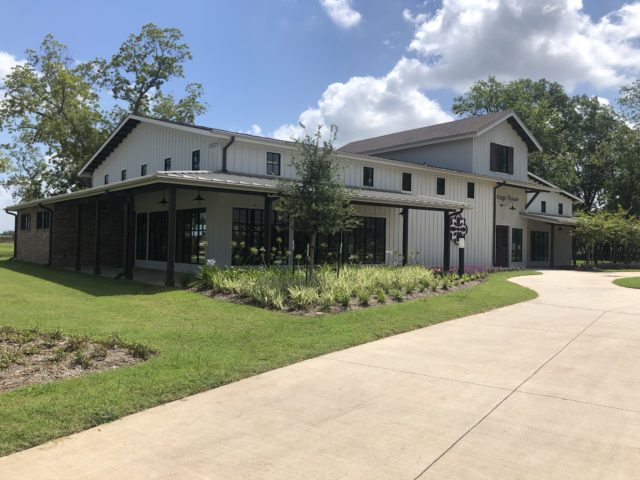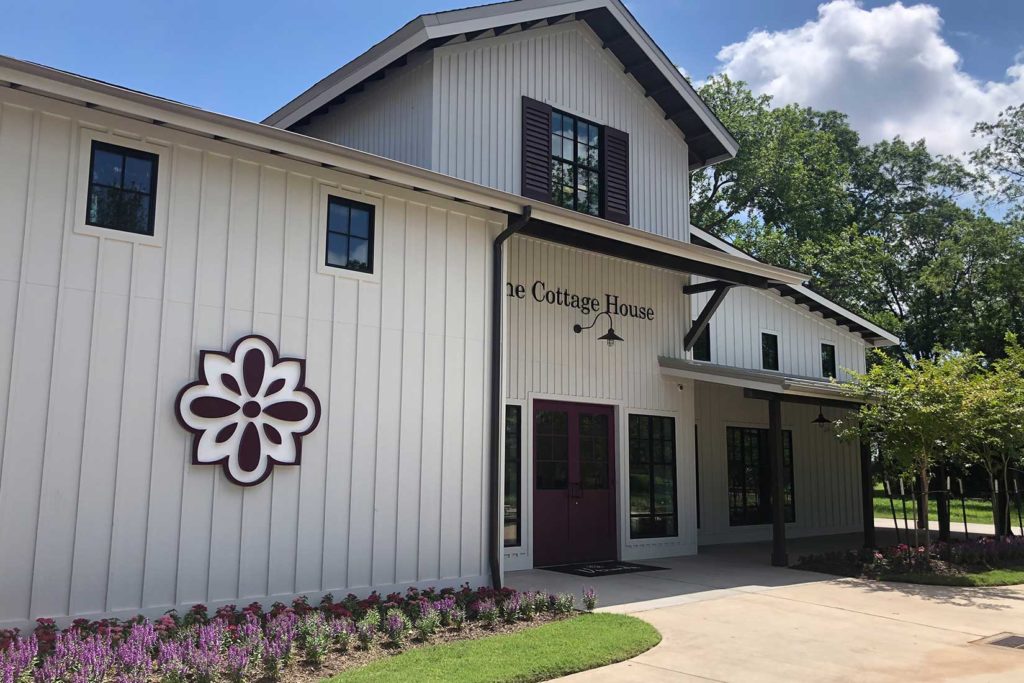CASE STUDY
THE COTTAGE HOUSE: CELEBRATING HISTORY THROUGH COMMUNITY DEVELOPMENT
CLIENT: The Johnson Development Corporation
PROJECT: Veranda
Located just outside of the historic downtown of Richmond, Texas, the Veranda master-planned community celebrates the rich history of Fort Bend County dating back to the arrival of Stephen F. Austin and the “Old 300 Settlers”. Designed to embody the spirit of the historic Veranda Hotel, a Richmond-based boarding house opened by Jane Long, the “Mother of Texas”, in the 1830s, the community is a place where life's simplest pleasures are celebrated. A place where people connect over laughter and lemonade. A place where front porch living and joy are one and the same.
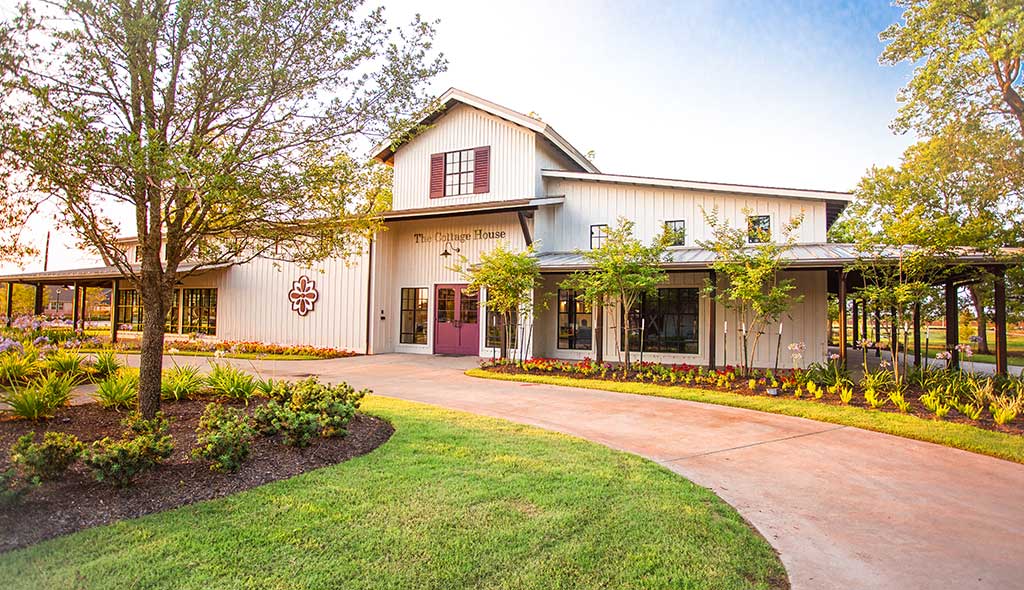
The Scene
The community is designed to embody the spirit of the historic Veranda Hotel, whilst honoring the many important figures in Texas History that paved the way for the creation of the thriving Fort Bend County. The Henderson Wessendorff Foundation, the original landowner, prided themselves on maintaining nature within their property. Through a sustainably conscious design strategy, the design team defined a character for the development that allowed for a mindful use of materials, preservation of the old-growth pecan trees, and touches of historic symbolism paying homage to the past. The buildings and materials within the community reflect character traits of old town Richmond through the use of rich red brick, garden-style landscapes, and period-style architecture. Apart from the Veranda Hotel namesake, the development aims to promote the “American Dream” of owning your own home with a front yard, two kids, a dog, and a white picket fence. An overriding, nostalgic theme throughout the community, the porch, or “Veranda”, harkens back to a time when porches were a gathering space for friends and family. The Cottage House, the community’s recreation center, provides a common ground for residents to engage with their community through activities while embracing the history of Richmond, Texas and Fort Bend County.
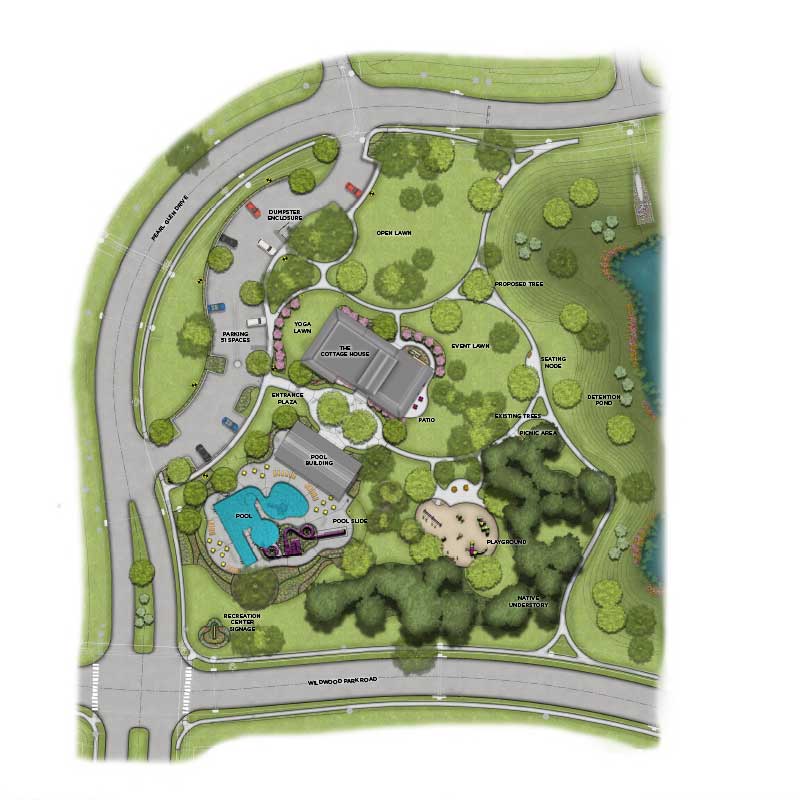
The Project
The Cottage House is a 5,095 sq. ft recreation center that serves as the center for activities within the 5.1-acre park surrounding it. Its central location within the community allows for the residents to access the amenities, not just via automobiles, but a series of hike and bike trails linking the homes to the Cottage House and park. The amenity center is comprised of a cardio and circuit training activity room with a massage suite, a multipurpose meeting room with a catering kitchen and serving area, as well as lobby space that includes a mezzanine play area, reception desk, and work space offices. The park site takes advantage of a large stand of existing pecan trees creating a nature-based atmosphere with picturesque views of the landscape and natural shade. The highlight of the Cottage House and park are the indoor/outdoor spaces created by the folding glass doors opening out onto the large series of veranda- style porches leading to the wooded lawn and playground areas. The playground is tucked into the grove of existing pecan trees that is reminiscent of playing in nature as a kid. Activity-friendly aquatic amenities bring modern features to the typical neighborhood pool. A water slide tower overlooks the existing tree grove, playground, and pool, and features a tube and runout slide. The most exciting feature in the pool is a rock wall for climbing, where kids celebrate by ringing the bell once they have scaled to the top of Mount Veranda.
The process
In order to successfully portray the theme and character of Veranda through the implementation of Cottage House, several variables were studied, including the accuracy of the historic nuances, the site conditions and constraints, and the constructability. The design team carefully researched the historic elements and materials utilized in period architecture to realize the design of the Cottage House and community as a whole. Inspired by one of Richmond’s historic sites and now museum, the Moore House, the arrival sequence of passing through a gate, strolling through the front yard or garden, crossing the porch to the front door of your home was interpreted as a main design strategy. This translated to architectural elements such as arches, porches, and fences creating portals and gateways. The lush landscape palette defined for the community drew from garden-type plant material, featuring several native species and perennial mixes, and was adapted to a commercial scale that would withstand time and require lower maintenance.
Obstacles are only benefits in disguise. One of the biggest challenges of the process was to create an outstanding facility that was able to maintain the natural character of the site. The existing trees were a key element of the development and of holding true to the vision set forth at the inception of the project. In order to construct the pool, two buildings, a playground, and parking lot, while preserving 50+ existing trees posed a challenging endeavor for the design team. Through the process, the design team enlisted the services of arborists and tree experts to identify key trees for preservation and for relocation. This was an integral part of the process to site the Cottage House complex. Relocating several long-time rooted iconic trees ranging from 10”-14” in diameter was no small feat. Alas, with the use of a 120” tree spade carried by an 18-wheeler, these trees found their new homes within the development. Preserving the existing trees achieved minimization of the heat island effect on the site, while providing instant shade for the playground and making the finished product feel as if it has been there all along.
The result
The City of Richmond has ties dating back to Stephen F. Austin and the original 300 Texas settlers. Names like the Georges, Moores, Hendersons, Longs, and the Wessendorffs have all had a significant impact on Fort Bend County and the Houston region. Veranda displays a connection to Richmond’s historic aesthetic through the street and pocket park naming weaving the community into the fabric of the existing city. One of the ways the development team honored the past while celebrating the future community was the creation of the “First 300 Settlers” dedication path. This pathway connecting the amenity center to the pool complex is paved with 300 pavers inscribed with the first 300 residents of Veranda mimicking Stephen F. Austin’s “Old 300 Settlers”. Veranda and the Cottage House celebrate history and foster a community atmosphere where life's simplest pleasures are prioritized – A place where front porch living and joy are one and the same.


